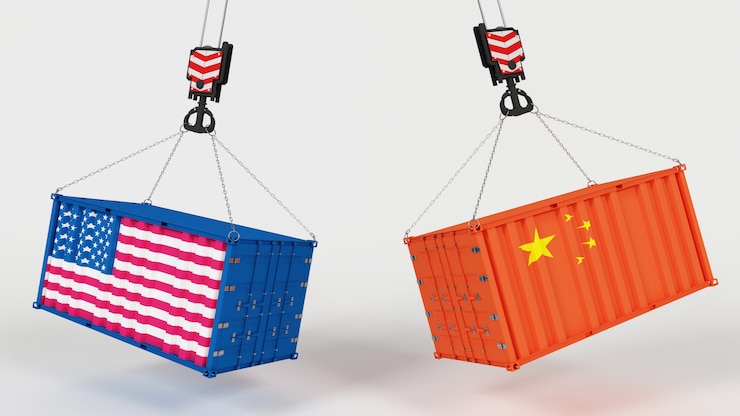Economic policymakers and business leaders worry a great deal about wage inflation. Average workers, not so much. That’s because real global monthly wage growth — which reflects the purchasing power of wages once cost-of-living inflation is taken into account — actually fell to negative 0.9 per cent in the first half of 2022. That is the first time since 2008 that real global wage growth has been negative, according to a new report by the International Labour Organization.
While inflation in areas such as food and fuel hits the poor in every country hardest, the comparative decline in real versus nominal wages has actually been sharpest in the rich world. Among advanced G20 countries, real wage growth in the first half of 2022 declined to minus 2.2 per cent, whereas growth in emerging G20 countries slowed but remained positive at 0.8 per cent.
Among rich countries, North America has been particularly hard hit; average real wage growth in the US and Canada fell to minus 3.2 per cent in the first half of 2022. No wonder the hand-wringing about wage-price spirals among policymakers is so at odds with the actual experience of most North American workers.
Although Federal Reserve chair Jerome Powell acknowledged in a speech last week at the Brookings Institution that cost-of-living inflation was eating up a larger percentage of the average pay cheque, he also noted there were 1.7 job openings for every unemployed worker in the US.
While pandemic-related supply chain issues have mostly abated and energy markets are stabilising, “wage increases are probably going to be a very important part of the [inflation] story going forward”, said Powell. “What you see is a real imbalance between supply and demand,” he continued, with wage inflation still too far above the Fed’s 2 per cent inflation target rate for central bankers to relax.
Why is this? Certainly, the Covid-19 pandemic played a huge role; workforce participation plunged in 2021 and has yet to recover. Many people remain out of work because they continue to struggle with illness or are caring for dependants. But a bigger part of the story is a rise in retirement, which accounts for more than half the 3.5mn-person labour shortfall in the US. Older people who lost jobs during the pandemic are having trouble finding work again, even in a tight market. Others are simply retiring early because of the wealth effect from housing and stock market gains of recent years.
Beyond this, Fed vice-chair Lael Brainard has questioned whether trends from deglobalisation to demographic shifts to climate disruption may also have changed labour market elasticity, creating more volatility and inflation.
Whatever the underlying causes of tightness in the labour market, the fact that pay rises simply aren’t keeping pace with other kinds of inflation creates a huge challenge for policymakers and business leaders. In response to rising inflation, companies are increasing prices for consumers, while imposing “shrinkflation”: reducing both product sizes and the quality of services in places such as hotels, restaurants and airports.
They are also investing in technology, some of it job-displacing, at faster than usual rates in an attempt to offset wage inflation. But in the most developed nations, such as the US, where consumer spending makes up as much as two-thirds of gross domestic product, if people don’t have more money in their pay cheques, neither business nor the economy can grow strongly.
In the past, productivity gains made by workers have justified wage rises. But, according to the ILO, this year shows the largest gap recorded since 1999 between productivity growth and real wage growth in high-income countries. People are working harder and better. But they simply aren’t seeing as much monetary benefit from their efforts as they would have in the past.
Given the gap between productivity and wages, there is reason to think that companies, particularly those still enjoying higher than average profit margins, have room to increase labour’s share of the pie. I would love to see various strategies deployed on this; incentives for companies that invest in worker training or other forms of productive capital expenditure that support labour, for example. Americans might also look to Europe, where job-retention schemes and wage subsidies kept real wage levels higher than in the US, even when adjusted for energy inflation.
Americans are also struggling with a different kind of inflation created in large part by decades of expansionary monetary policy — asset price spikes. Housing services inflation is 7 per cent and rising. But even this number belies the real impact of the cost of housing. Between much higher interest rates and high prices, the average mortgage payment was 77 per cent higher in October than it would have been the previous year, according to the website Realtor.com.
This gets at an important truth. Goods and services inflation has only been rising for the past couple of years. But we have had plenty of inflation in other areas, including asset prices, over the past few decades. It is a bitter irony that while monetary policy fuelled the bubble in everything, and central bankers must now quash inflation, they have no tools to fix what’s truly broken in labour markets.





More Stories
How China US Trade Agreement Tariffs Impact Global Markets
Biden vs Trump: A Deep Dive into Approval Ratings for 2024
Top Moments from the Biden vs Trump Debate 2024